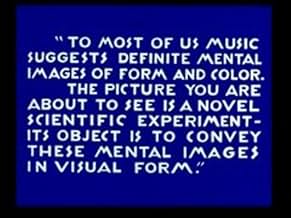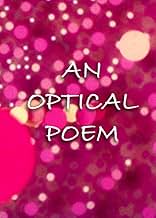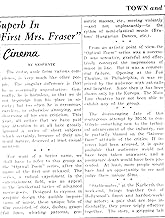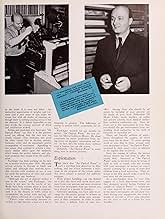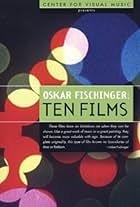Mental imagery of music is visualized with two-dimensional shapes dancing to the rhythm of Franz Liszt's Hungarian Rhapsody No. 2.Mental imagery of music is visualized with two-dimensional shapes dancing to the rhythm of Franz Liszt's Hungarian Rhapsody No. 2.Mental imagery of music is visualized with two-dimensional shapes dancing to the rhythm of Franz Liszt's Hungarian Rhapsody No. 2.
- Director
Featured reviews
It's an MGM animated short with Hungarian Rhapsody No. 2 by Franz Liszt playing. It's Technicolor. It's all bright colors and geometric shapes. It's a little experimental. It's interesting. Sometimes, the movement is pretty good, but other times, I want it to switch with the music tempo a lot more. One of the most compelling aspect of this piece of music is its many changes of tempo. The visuals need to match that better. This type of animated experiments have a long Hollywood history. Producer Oskar Fischinger would go on to do a sequence in Walt Disney's Fantasia (1940) which obviously drew inspiration from this.
Just about anyone who's ever made a music video especially an abstract one owes a debt of gratitude to Oskar Fischinger. This short film is a charming rendition of Liszt's Second Hungarian Rhapsody set to a dazzling series of colored dots, lines, flashes and vivid visual effects that often look like a Piet Mondrian painting come to life. Paul Marquardt's often cheeky orchestration far different from the one usually heard adds a quite inventive series of tonal effects to the film that only underscores the rambunctious appeal of Fischinger's animation. I remember seeing films like this from the 1960's and not realizing anyone had done anything this imaginative with the same format thirty years earlier and I can't for the life of me imagine what unsuspecting moviegoers who caught this in 1937 on a program headlined by an MGM feature of the period made of it!
The tagline for Disney's 'Fantasia (1940)' read: "Hear the pictures! See the music!" This is, in effect, what Oskar Fischinger was doing with his animation – communicating music to the deaf, giving visual life to music using colours and geometric patterns. His approach, though later imitated by Walt Disney, was largely appreciated outside the mainstream. However, 'Allegretto (1936)' and 'An Optical Poem (1937)' were both commissioned by big studios – Paramount and MGM, respectively {however, the former film was inconceivably stifled into a black-and-white release}. It was a little novel, I'll admit, to see such an abstract cartoon presented under the MGM banner, and, indeed, it seems that the studio was understandably cautious; they bizarrely introduce 'An Optical Poem' as a "scientific" experiment.
Fischinger's film uses patterns of oscillating circles, paper cutouts dangling from invisible wires, synchronised to Franz Liszt's "Hungarian Rhapsody No. 2." The animation itself resembles a journey through outer space. The orbiting circles are akin to moons orbiting planets, planets orbiting the sun, and there's an unmistakable image of a comet hurtling across the night sky. The overall effect of the space-themed visuals and accompanying classical musical is not all that dissimilar to Kubrick's use of the "Blue Danube" waltz during '2001: A Space Odyssey (1968).' Fischinger seems to be suggesting that to fully articulate such magnificent music is beyond the grasp of our earthly minds – to do so, we must utilise objects far beyond our mortal scope. Most incredibly of all, Fischinger reconstructed these great objects using little more than coloured paper and wire.
Fischinger's film uses patterns of oscillating circles, paper cutouts dangling from invisible wires, synchronised to Franz Liszt's "Hungarian Rhapsody No. 2." The animation itself resembles a journey through outer space. The orbiting circles are akin to moons orbiting planets, planets orbiting the sun, and there's an unmistakable image of a comet hurtling across the night sky. The overall effect of the space-themed visuals and accompanying classical musical is not all that dissimilar to Kubrick's use of the "Blue Danube" waltz during '2001: A Space Odyssey (1968).' Fischinger seems to be suggesting that to fully articulate such magnificent music is beyond the grasp of our earthly minds – to do so, we must utilise objects far beyond our mortal scope. Most incredibly of all, Fischinger reconstructed these great objects using little more than coloured paper and wire.
What makes me chuckle about this short film is that MGM actually financed it! Who'd have thought that such attitudes were ever present at the big studios? The intertitle at the start calls the movie a "scientific experiment"*, gawd those guys were dumb. Anyway they let Fischinger get on with his business so I can't complain. The second time I watched it I really was dumbfounded by the MGM logo, for once, ars gratia artis actually meant something! Anyway the film is a visual accompaniment to Liszt's Hungarian Rhapsody no.2. Fischinger chose his music really well because there are lots of sea changes within the piece that allows him to do something totally different at the mood switches. He uses coloured paper circles and stop motion animation, to create a geometrical ballet. He must have done a lot of work because the movements are all very smooth. In fact it's really a masterpiece of technical craft and almost unbelievable how synchronised the animation is to the music.
It brought a big smile to my face and that's really rare.
* "To most of us, music suggests definite mental images of form and colour. The picture you are about to see is a novel scientific experiment. Its object is to convey these mental images in visual form"
It brought a big smile to my face and that's really rare.
* "To most of us, music suggests definite mental images of form and colour. The picture you are about to see is a novel scientific experiment. Its object is to convey these mental images in visual form"
Optical Poem, An (1937)
*** (out of 4)
This 6-minute animated short is considered by many to have been the inspiration for Disney's FANTASIA. This film contains various animated images being played to Franz Liszt's Hungarian Rhapsody No. 2 and makes for quite a ride. In his day, director Fischinger was pretty much overlooked and after during down a job offer from Disney, he would eventually be fired by both MGM and Paramount. His animation career never took off in the movies but years later his work began to be reevaluated and today's he's considered one of the best. This, considered his best film, is pretty strong in terms of its visual style even though it's rather simple. A blue background with various circles, squares and other images. The film moves along quite well, although the six-minutes do start to get a bit long towards the end.
*** (out of 4)
This 6-minute animated short is considered by many to have been the inspiration for Disney's FANTASIA. This film contains various animated images being played to Franz Liszt's Hungarian Rhapsody No. 2 and makes for quite a ride. In his day, director Fischinger was pretty much overlooked and after during down a job offer from Disney, he would eventually be fired by both MGM and Paramount. His animation career never took off in the movies but years later his work began to be reevaluated and today's he's considered one of the best. This, considered his best film, is pretty strong in terms of its visual style even though it's rather simple. A blue background with various circles, squares and other images. The film moves along quite well, although the six-minutes do start to get a bit long towards the end.
Did you know
- TriviaAs this was released two years before "Fantasia," it's reasonable to assume either Disney or someone who worked for him saw this and realized the possibilities of non-narrative animation set to classical music; certainly the "Toccata and Fugue in D Minor" sequence bears a striking similarity.
- Quotes
Prologue (Title): To most of us music suggests definite mental images of form and color. The picture you are about to see is a novel scientific experiment - Its object is to convey these mental images in visual form.
Details
- Release date
- Country of origin
- Language
- Also known as
- MGM Miniatures (1937-1938 Season) #5: An Optical Poem
- Production company
- See more company credits at IMDbPro
- Runtime6 minutes
- Aspect ratio
- 1.37 : 1
Contribute to this page
Suggest an edit or add missing content


